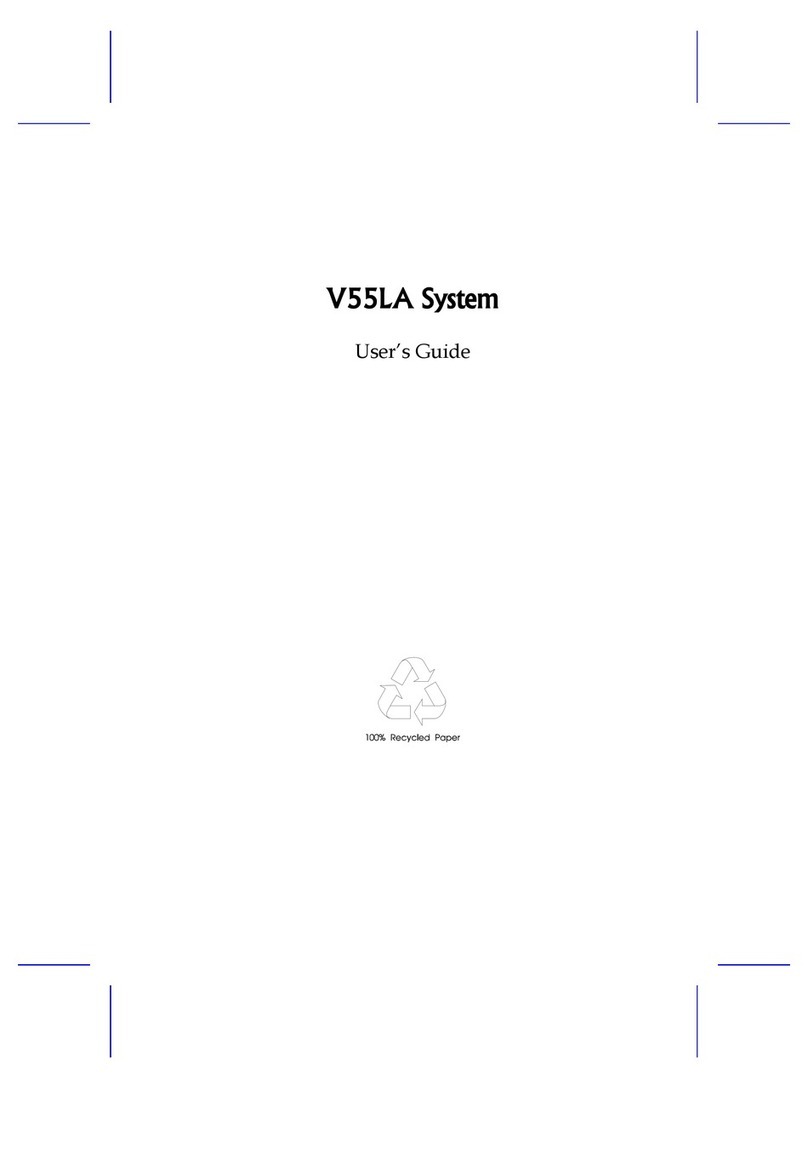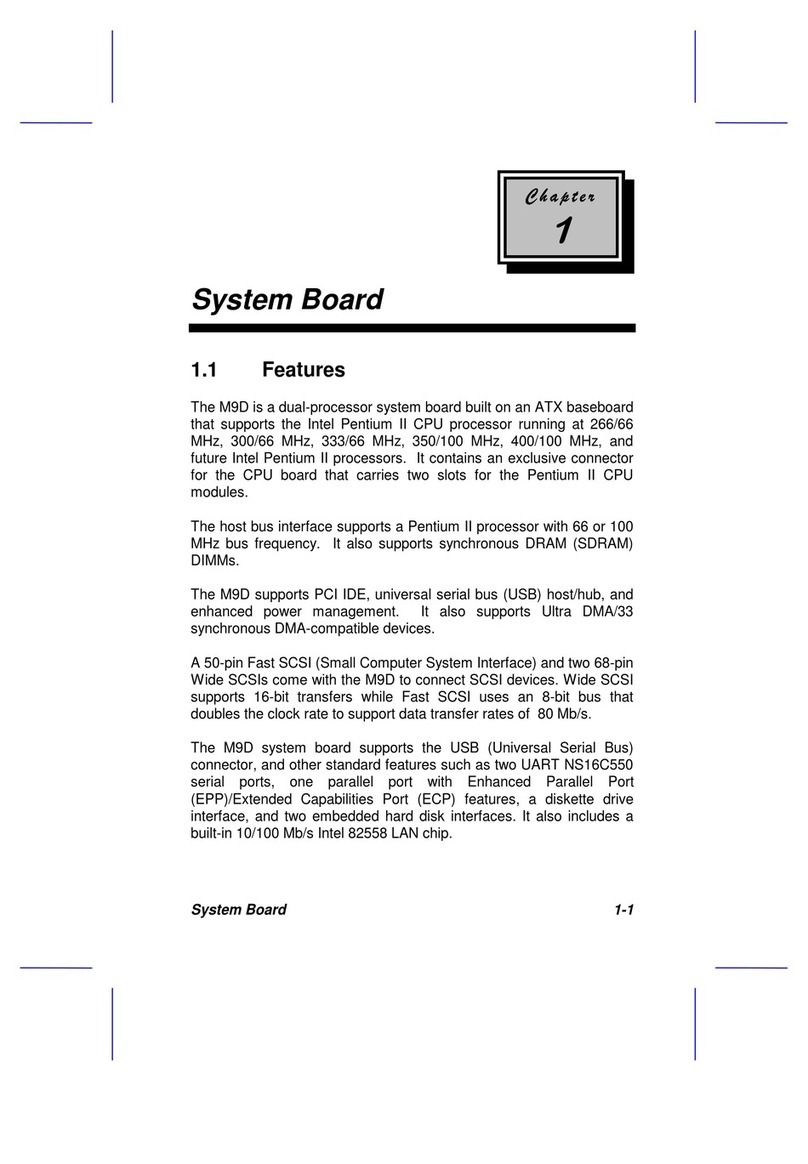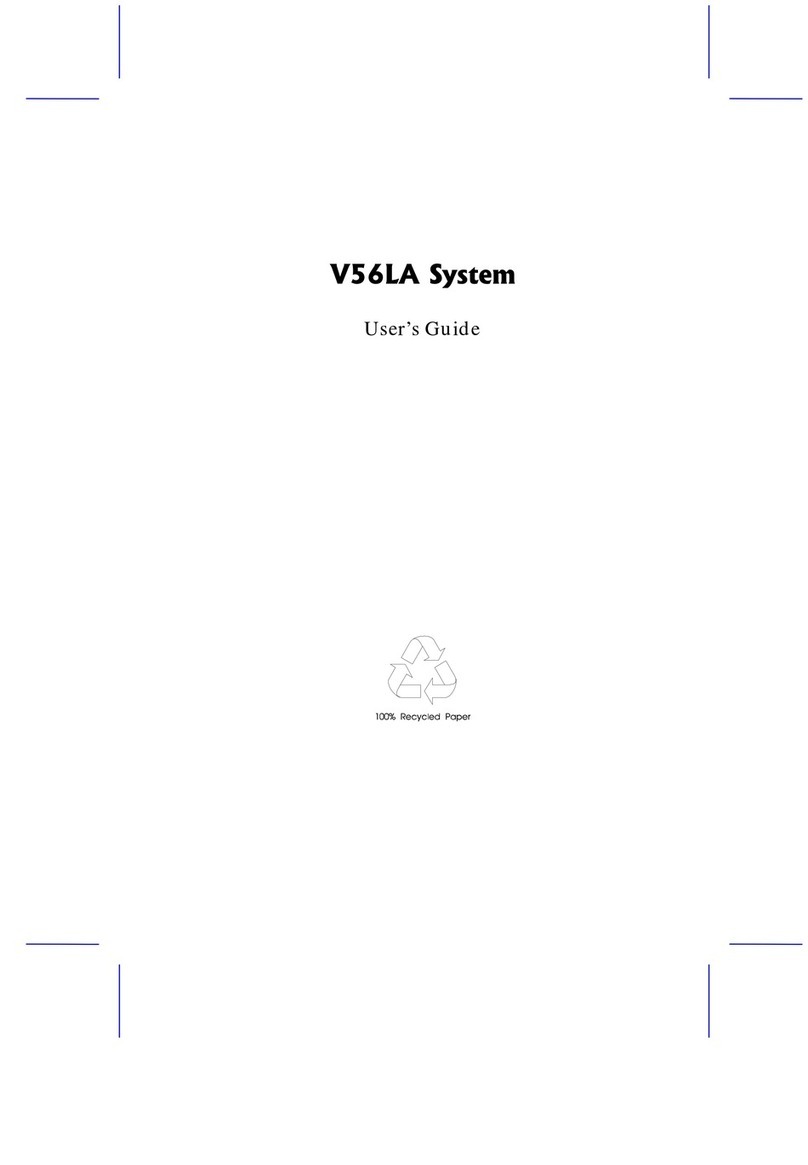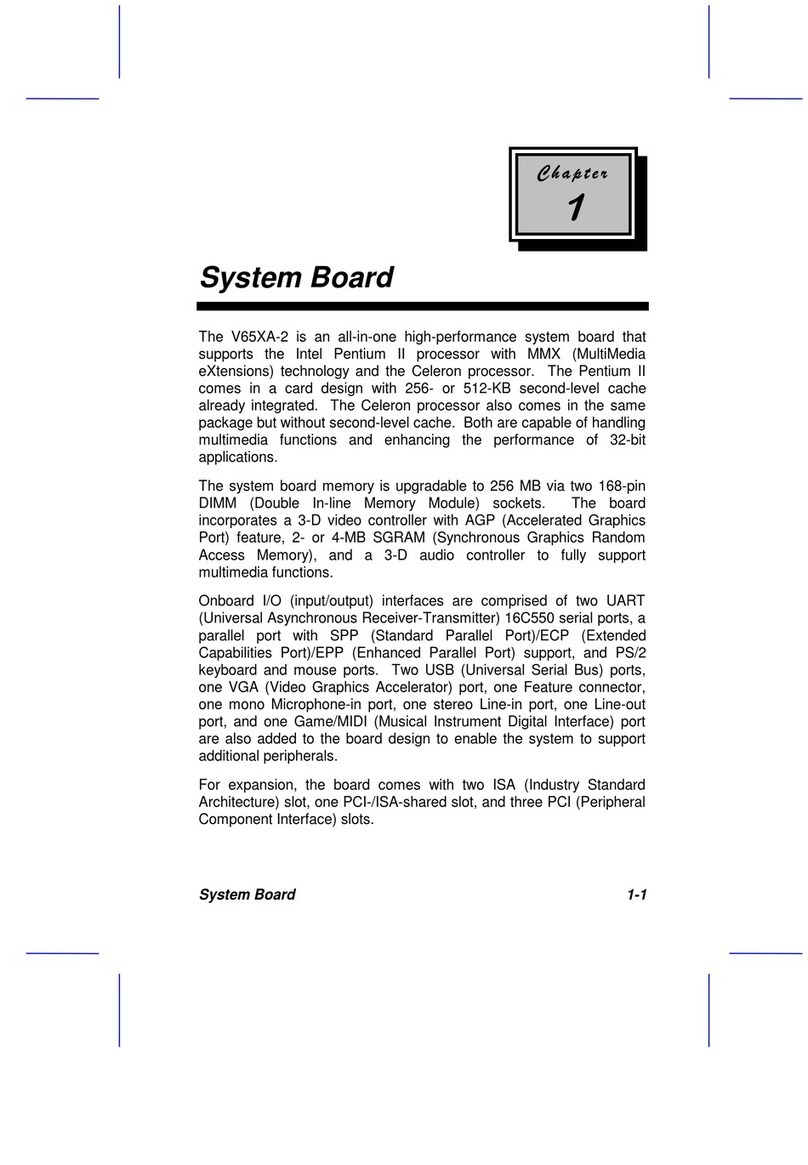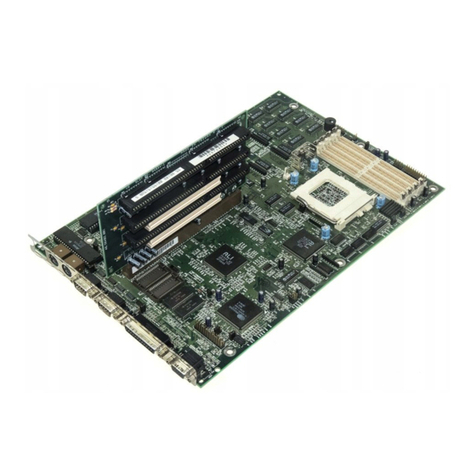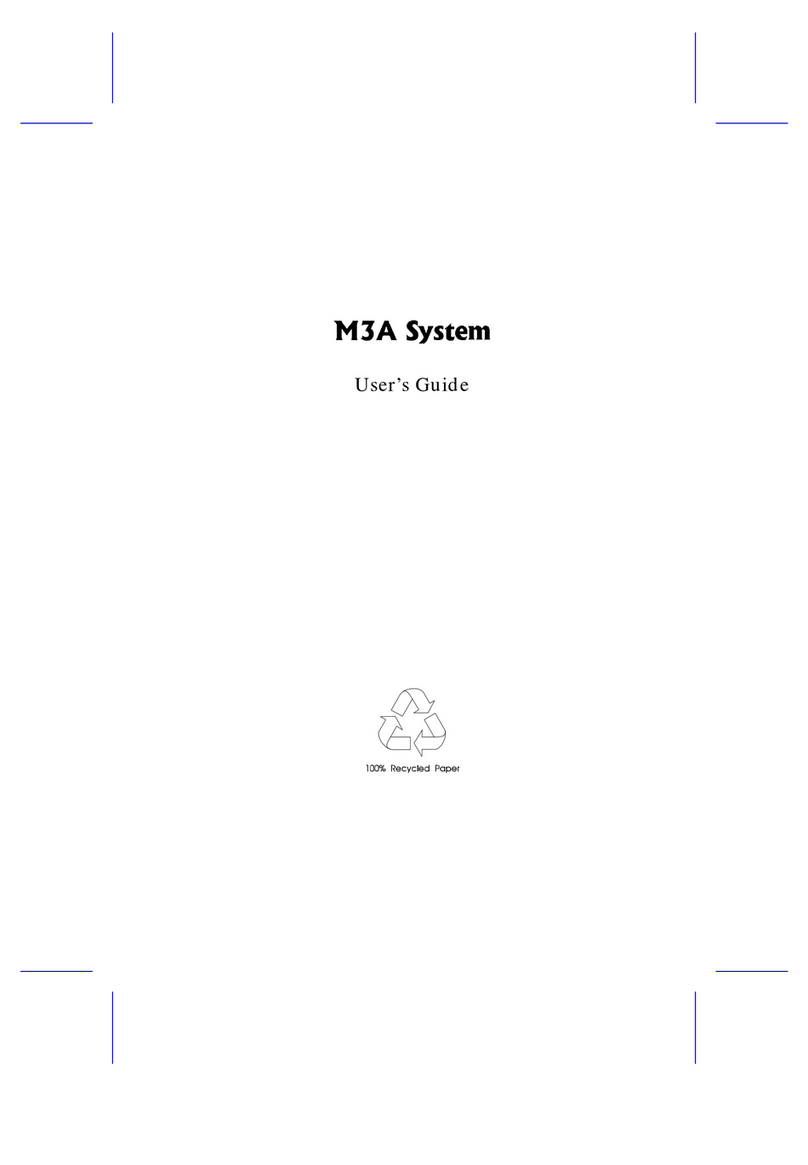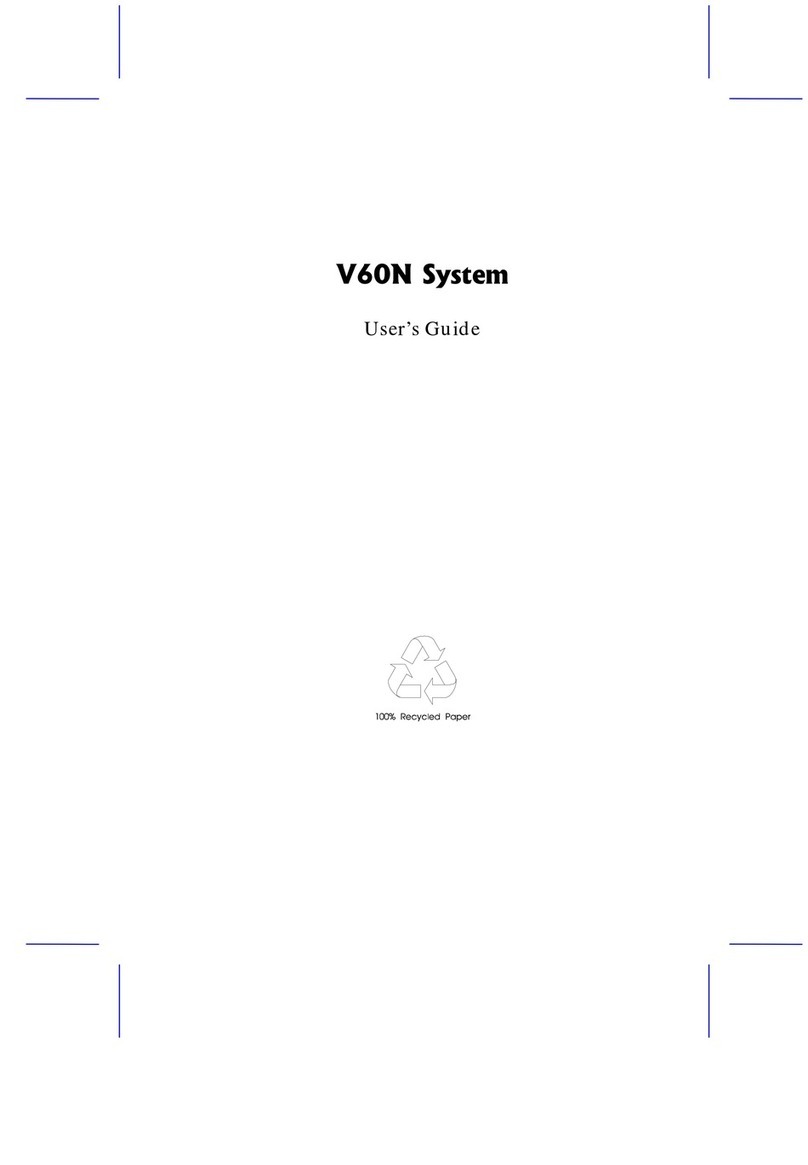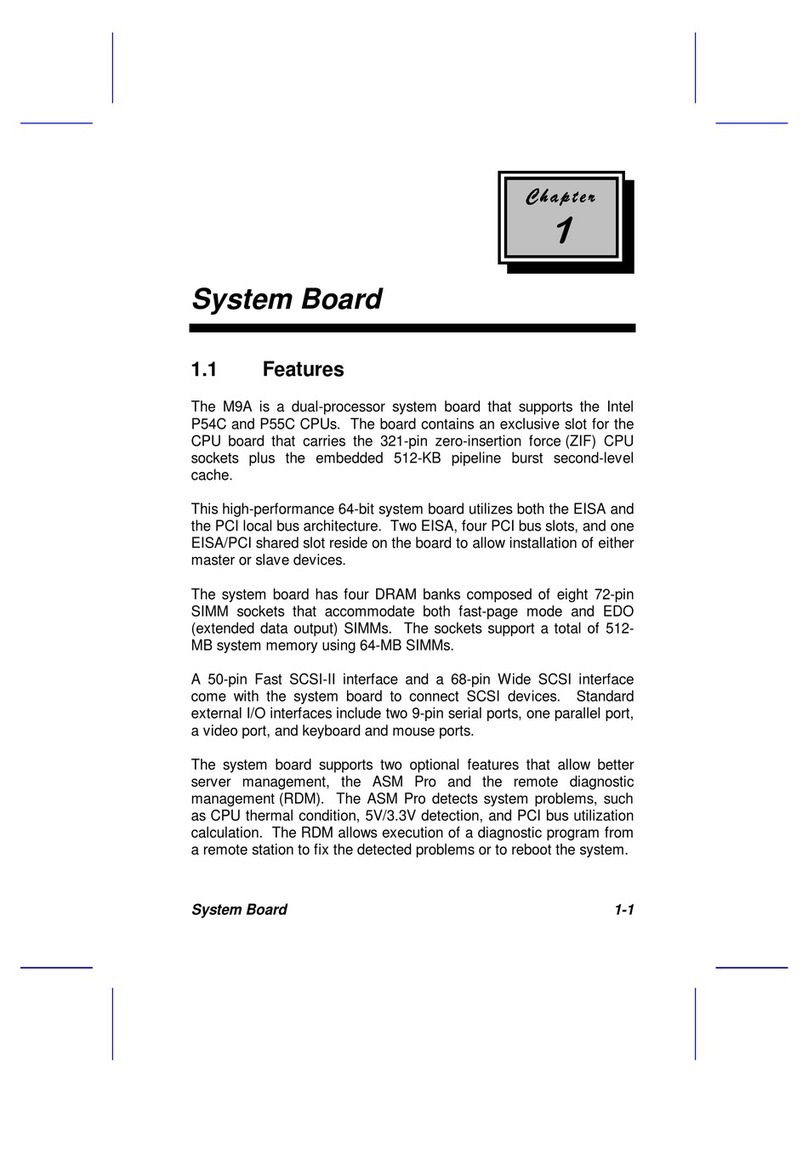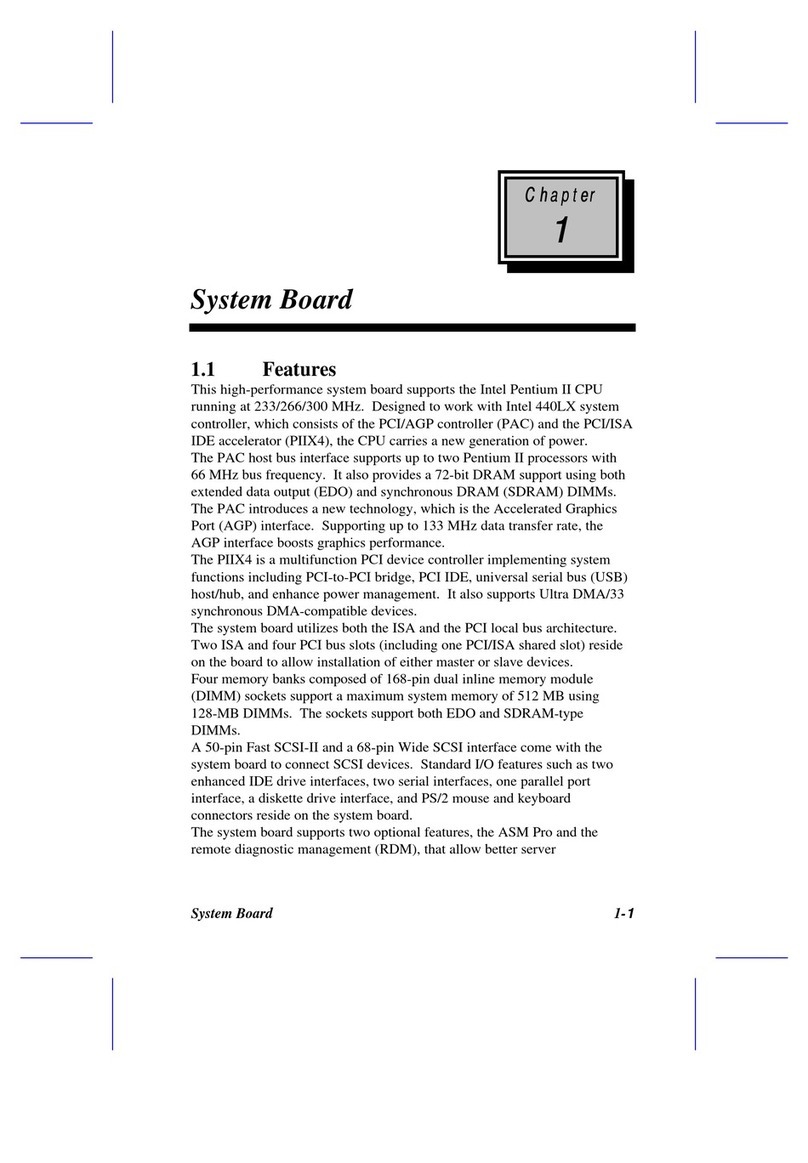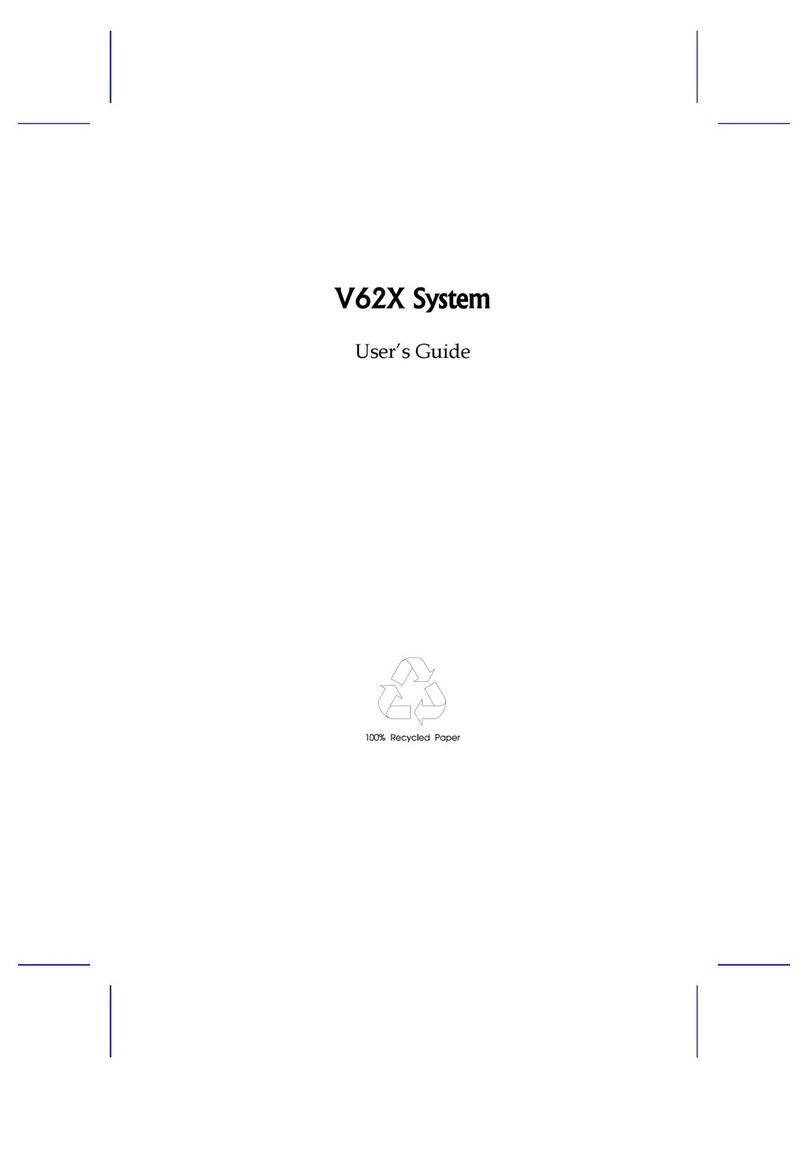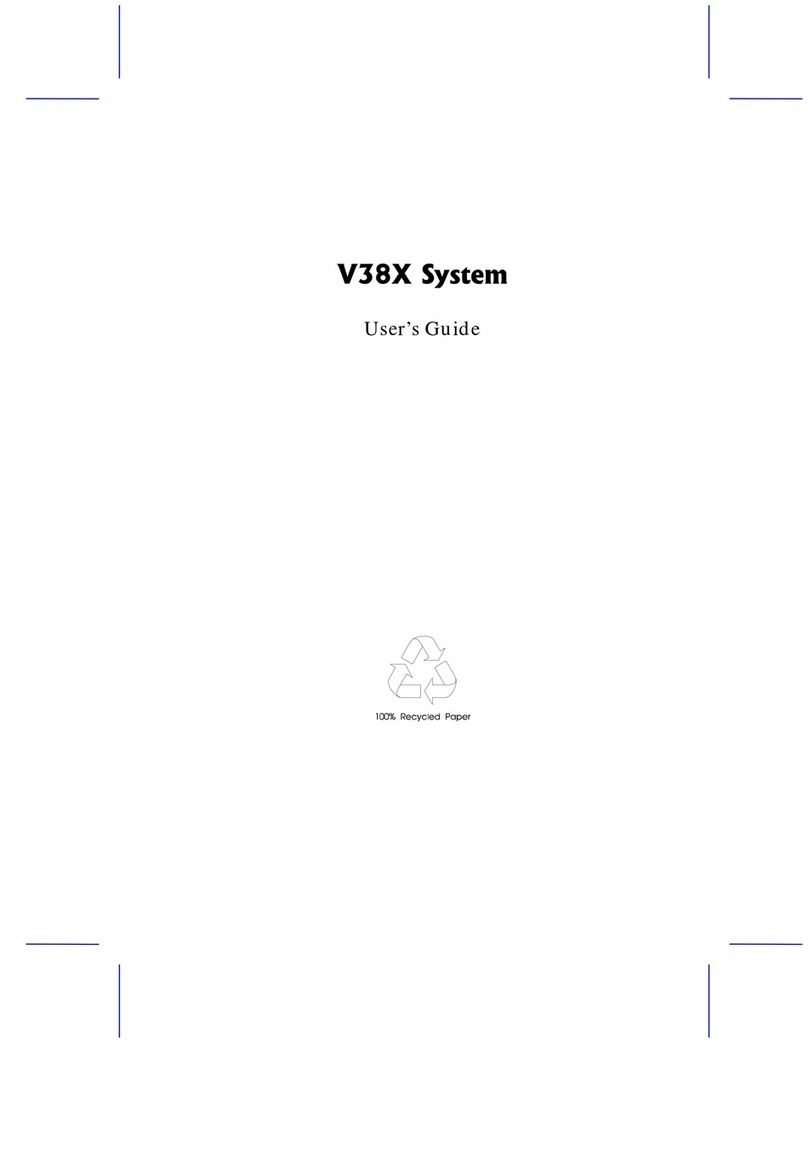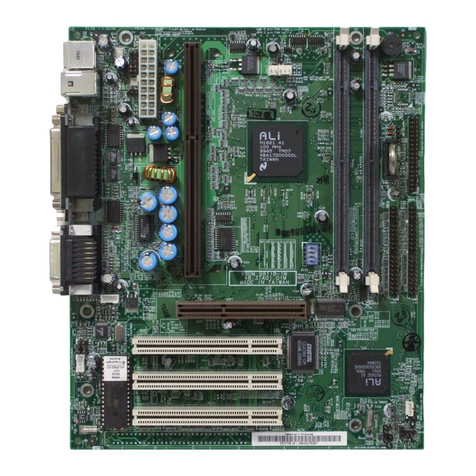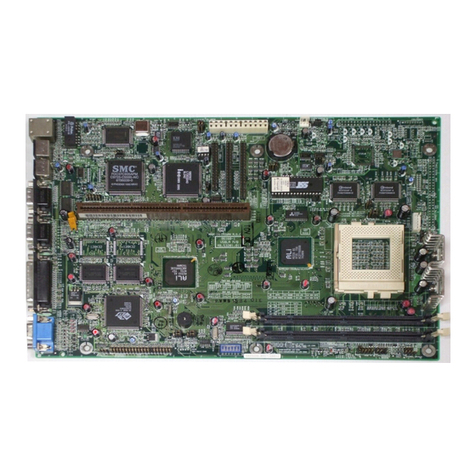& K DSWHU
System Board
System Board 1-1
1.1 Features
The M9N is a dual-processor system board that supports the Intel
Pentium II CPU. It contains an exclusive connector for the CPU board
that carries two slots for the Pentium II CPU modules.
This high-performance 64-bit system board utilizes both the ISA and
the PCI local bus architecture. Two ISA and five PCI bus slots reside
on the board to allow installation of either master or slave devices.
A 50-pin Fast SCSI-II interface and two 68-pin Wide SCSI interfaces
come with the system board to connect SCSI devices. External I/O
interfaces include a parallel port and a video port, RJ-45 and USB
connectors, and keyboard and mouse ports.
The system board supports two optional features, the ASM Pro and
the remote diagnostic management (RDM), that allow better server
management. The ASM Pro detects problems in CPU thermal
condition, CPU working voltage detection (±12V/±5V/3.3V/1.5V), and
PCI bus utilization calculation. It also detects if the CPU fan or the
chassis fan malfunctions. The RDM allows execution of the RDM
diagnostic program from a remote RDM station to fix detected
problems or to reboot the system.
